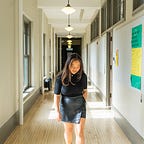We parsed through a library of historical and notable interaction designs, and fell upon the Fun Palace, a “laboratory of fun”, “a university of the streets”, a project that “was not a building in any conventional sense, but was instead a socially interactive machine”.
More collected research here.
Points that particularly caught our attention:
- the participatory nature. A belief in community, both in the sense of the importance of community as well as the value in autonomous community members to be creative
- under-used spaces
- communication (machines, link-ed-ness)
- mobile spaces
- “theater”, performance, conversation through performance
&
“Choose what you want to do — or watch someone else doing it. Learn how to handle tools, paint, babies, machinery, or just listen to your favourite tune. Dance, talk or be lifted up to where you can see how other people make things work. Sit out over space with a drink and tune in to what’s happening elsewhere in the city. Try starting a riot or beginning a painting — or just lie back and stare at the sky.”
Our ideation started with quickly jotting down ideas for “fun palaces”. What are fast and easy ways to add FUN to our environments? What can we make that carries genuine impact? We’re thinking installing tire swings around campus, tetherballs, suitcases we distribute that open up to just a ton of toys.
Notably from the start, though, one point was clear:
We also thought about how expensive it is to hang out with friends today — could this largely be due to the infrastructure of America, our lack of accessible and wonderful third spaces? What would a future look like where instead of making plans with friends to go out and grab a drink or a meal, or some weird activity that’s kind of expensive and has a time limit, you can just say, “Hey, let’s go to the fun palace!”
What is the most under-used, found-everywhere space? The sky. Sun. Wind.
We continued thinking about projects that took advantage of the sky, sunlight, and wind. Bubbles, puppet shows, kites.
The sky as an interface!
Kites
We want to use kites as a way of 1) connecting community and 2) collaborative/inviting storytelling.
In order to do this, we had to think of a way to make a “kite kit”. We landed on designing some sort of customizable stencil (two words that are commonly opposites).
To get there, we zoomed out to two areas of research:
- Tooling. How do we design [what is essentially a tool] to encourage creativity but also have the common necessity for functionality?
- Kits. What are the elements that make a kit good?
We fell upon a breadth of kits at the Center for Creative Reuse, and bought some (only $5 for a whole bag!!) to research.
Prototyping
An exquisite corpse book,
09/27 [final, for now] Prototype
The haul: 1-ply chip board for the pages, cardboard for the covers
The plan: ask Elise really nicely for help.
Lastly: take flight.
